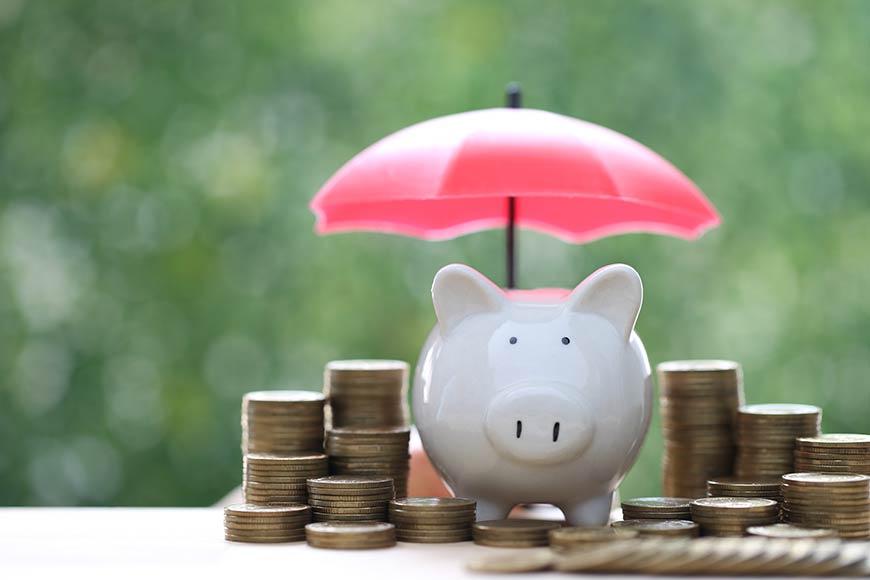Heatwaves are extreme periods of very hot weather that last for an extended period of time.
During a heatwave, temperatures rise much higher than what is usual for a specific area, and it can feel very humid too. These intense heat events can have significant effects on individuals, families, homes, businesses, and communities. It’s important to understand the consequences of heatwaves so we can take steps to protect ourselves and reduce the risks associated with these extreme weather events.
When a heatwave occurs, the combination of extremely hot temperatures and high humidity can cause health problems. People can experience heat exhaustion, heatstroke, and dehydration. Some groups, like older adults, young children, pregnant women, and those with existing health conditions, are more vulnerable to the harmful effects of extreme heat. Heatwaves can also strain infrastructure, disrupt daily life, and worsen inequalities in communities.
Heatwaves affect not only individuals but also homes, businesses, and the community as a whole. The high temperatures can damage buildings and businesses may experience reduced productivity and financial losses. Heatwaves can also put pressure on energy systems, leading to power outages and increased demand for cooling. Water resources, agriculture, and natural ecosystems can suffer, affecting food production and the environment.
To keep ourselves, our families, and communities safe during heatwaves, it’s crucial to understand the impact they can have. By being aware of the consequences, we can prepare in advance and respond effectively. In the following sections, we will learn about strategies and guidelines for protecting ourselves, our families, homes, businesses, and communities during heat waves.
On this page you will find:

Protect Yourself and Your Family
Ensuring the safety of yourself and your family during a heatwave is of utmost importance. Here are some important steps to follow to ensure your safety:
Stay informed: Keep an eye on weather forecasts and heat wave warnings issued by local authorities. Stay aware of the duration and intensity of the heat wave to plan and prepare accordingly.
The Federal Emergency Management Agency (FEMA) app, can be used to receive real-time weather alerts, send notifications to loved ones, locate emergency shelters and FEMA Disaster Recovery Centers, and more.
The American Red Cross Emergency App, lets you customize 40 different weather alerts and has an interactive map to help you find open Red Cross shelters.
The Center for Disease Control (CDC) offers useful tips for preventing heat-related illness.
Also, using weather.gov as a valuable resource can help you proactively protect yourself before a disaster strikes by providing accurate and up-to-date information on severe weather conditions, warnings, and forecasts specific to your location, empowering you to make informed decisions and take necessary precautions to ensure your safety.
People with disabilities: Preparing for disasters is crucial for everyone, but it becomes even more vital for individuals with disabilities, who may have specific needs and require additional support during emergencies. Find practical steps and considerations to ensure the safety and well-being of people with disabilities in the face of potential disasters here.
Stay hydrated: Ensure an adequate supply of drinking water is available for your family. Drink plenty of water even if you don’t feel thirsty. Avoid excessive consumption of caffeinated or alcoholic beverages, as they can contribute to dehydration.
Seek cool environments: Spend time in air-conditioned or well-ventilated places. If you don’t have access to air conditioning at home, consider visiting public spaces with cooling centers such as shopping malls, libraries, or community centers.
Dress appropriately: Wear lightweight, loose-fitting, light-colored clothing made from breathable fabrics to promote airflow and aid in sweat evaporation. Breathable fabrics include cotton, linen, bamboo, hemp, and certain types of synthetic materials like polyester microfiber or nylon mesh. Wear hats to protect your head.
Limit outdoor activities: Minimize sun exposure during the hottest parts of the day, usually between 10 a.m. and 4 p.m. If you must be outside, seek shade, take frequent breaks in cool or air-conditioned areas if available, and stay hydrated.
Use sunscreen: Apply sunscreen with a high SPF to protect your skin from harmful UV rays, even on cloudy days. Reapply as directed. Find more information on SPF, sun exposure, and UV rays from the sun here.
Check on vulnerable individuals: Regularly check on older adults, young children, and those with pre-existing health conditions as they are more susceptible to heat-related illnesses.
Keep emergency contacts handy: Know the signs of heat-related illnesses such as heat exhaustion and heatstroke. Have emergency contact numbers readily available in case medical assistance is needed.

Protect Your Home
Protecting your home during a heat wave is crucial to maintain a comfortable and safe living environment. Below are some measures you can take to safeguard your home.
Use shades and insulation: Close curtains, blinds, and shades during the day to keep the sun’s heat out. Insulate your home properly to prevent heat from entering and cool air from escaping. Find more information on how to air seal and insulate your home here.
Maintain good airflow: Promote airflow throughout your home by using fans, ceiling fans, or window fans. Set fans to rotate counterclockwise to create a cooling breeze.
Limit heat sources: Minimize the use of heat-generating appliances such as ovens, stoves, and dryers during the hottest parts of the day. Instead, opt for cooking methods that produce less heat such as microwaves. Also, reduce heat buildup inside your home by using energy-efficient appliances, switching to LED lights, and avoiding unnecessary use of electronics that generate heat.
Stay well-ventilated: Open windows and doors during cooler evenings and nights to facilitate natural ventilation.
Create a cool zone: Set up a designated cool area in your home where you can spend time during the hottest parts of the day. Use fans or portable air conditioners to enhance comfort.
Stay hydrated: Keep a sufficient supply of drinking water available for yourself and your family.

Protect Your Business
Protecting your business during a heatwave is essential to ensure the well-being of your employees, maintain productivity, and safeguard your operations.
The Occupational Safety and Health Administration (OSHA) provides guidelines and regulations that businesses must follow to protect workers during emergencies. Their role in a business’s emergency preparedness and response is to establish regulatory requirements, provide guidance, and promote a safe and healthy work environment for employees, thereby minimizing risks and ensuring the protection of workers during emergencies. Find more information on how to prepare and train for emergencies and the hazards to be aware of when an emergency occurs here.
Here are some general measures you can take to protect your business during a heatwave:
Educate employees: Inform your staff about the risks associated with heatwaves and provide guidelines on how to stay safe. Encourage open communication and emphasize the importance of looking out for one another.
Ensure adequate cooling: Install and maintain effective air conditioning systems in your workplace to provide a comfortable working environment. Regularly service and inspect cooling systems to ensure they are functioning properly.
Provide cool areas: Create designated cooling zones within the workplace where employees can take short breaks and cool off. Equip these areas with fans or air conditioning, if feasible.
Encourage proper clothing: Advise employees to wear breathable, light-colored clothing and provide guidelines on suitable attire during hot weather.
Monitor indoor conditions: Regularly check the indoor temperature and humidity levels. Install temperature sensors or use weather monitoring apps to keep track of the workplace environment.
Promote hydration: Encourage employees to stay hydrated by providing access to cool drinking water and reminding them to drink regularly. Consider providing water coolers or hydration stations throughout the workplace.
Manage outdoor work carefully: If your business involves outdoor work, take extra precautions. Provide shaded areas, rest breaks in cool zones, and access to water. Consider adjusting work schedules to avoid peak heat times or implementing rotation systems to limit exposure.
Plan for power outages: Heatwaves can strain electrical systems and increase the risk of power outages. Develop contingency plans to deal with potential power disruptions, including backup power sources or temporary relocation to cooler facilities if necessary.

Protect Your Community
Actively protecting your community during a heatwave involves collective efforts to ensure the well-being and safety of its members. Below are some ways to actively protect your community during a heatwave.
Raise awareness: Educate your community about the risks and challenges associated with heatwaves. Share information on heat-related illnesses, preventive measures, and available resources. Use various communication channels, such as social media, local newsletters, community meetings, or posters, to spread awareness.
Establish cooling centers: Collaborate with local organizations, schools, or community centers to set up designated cooling centers. These spaces provide a safe and air-conditioned environment where community members can seek respite from the heat. Ensure these centers are easily accessible, well-equipped, and adequately staffed.
Check on vulnerable populations: Collaborate with community organizations to conduct wellness checks on your community. This outreach may include checking on vulnerable community members, such as older adults, individuals with disabilities, unhoused or those with chronic illnesses. Additionally, consider establishing a system for regular check-ins to ensure their well-being and provide aid if needed.
Support emergency services: Stay informed about emergency protocols and guidelines in your community. Assist local emergency services by providing timely information about individuals or locations that may require assistance due to heat-related issues. Promote the use of emergency helplines and ensure community members know how to access emergency services.
Engage community organizations: Collaborate with community organizations, local businesses, schools, religious institutions, and neighborhood associations to collectively address heat-related challenges. Pool resources, share information, and organize joint efforts to protect and support the community during heatwaves.
Remember, during a heat wave, it’s essential to prioritize your health and safety by taking appropriate precautions. By following these guidelines, you can protect yourself, your loved ones, home, business, and community from the adverse effects of extreme heat.
